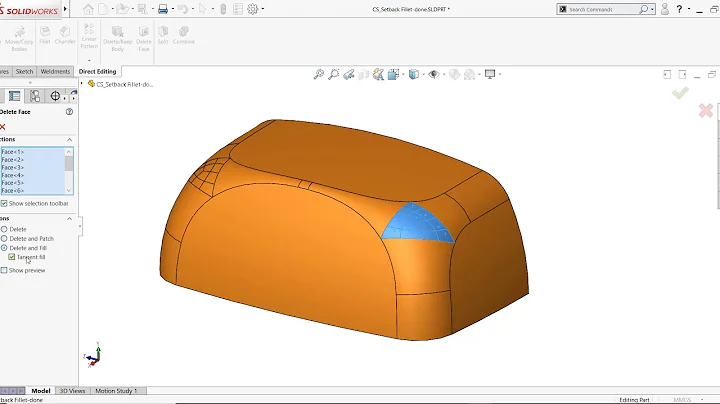Maximize Your Space: Unlocking Tenant Improvement Allowances
Table of Contents
- Introduction
- What are Tenant Improvement Allowances?
- How Do Tenant Improvements Work?
- How Much TI Can You Negotiate?
- When is a Good Time to Negotiate Tenant Improvements?
- What If The Landlord Doesn't Offer TIA?
- Who Completes The Build-Out?
- Alternatives To Build-Out Allowances
- Conclusion
Introduction
When leasing commercial real estate, one important factor to consider is the tenant improvement allowance. This allowance can help mitigate the costs associated with building out the space to fit your specific needs. In this article, we will explore what tenant improvement allowances are, how they work, and provide useful tips for negotiating and managing tenant improvements. So let's dive in and learn all about tenant improvement allowances.
What are Tenant Improvement Allowances?
Tenant improvement allowances, also known as TI, TIA, or TA, are a pre-negotiated sum of money that a landlord provides to the tenant to cover all or a portion of the costs to build out the space. This allowance is typically expressed as a per square foot amount. For example, if a landlord offers $20.00 per square foot on a 2,500 square foot commercial space, the tenant is eligible for a reimbursement of $50,000 worth of construction costs.
It is important to note that while a tenant improvement allowance can cover various build-out expenses such as labor, it usually does not include the cost of furniture or other moving/start-up costs not directly related to the physical improvements of the space. Now that we have a basic understanding of what tenant improvement allowances are, let's take a closer look at how they work.
How Do Tenant Improvements Work?
While you may have negotiated a tenant improvement allowance with your real estate broker, it is essential to understand how the process works. Although the landlord will provide the allowance, you will still need to have the initial capital to cover the construction costs upfront. Once the construction work is completed and you have submitted all the necessary documentation such as receipts and lien waivers, proving that the work has been done and paid for, the landlord will then reimburse you the agreed-upon allowance.
In our previous example, if the landlord has agreed to a $50,000 improvement allowance, you must be prepared to use your own funds to cover the construction costs initially. Upon proof of completion, including receipts and lien waivers, the landlord will provide you with the $50,000 allowance. It is crucial to keep track of all expenses and provide proper documentation to ensure a smooth reimbursement process.
How Much TI Can You Negotiate?
The size of the tenant improvement allowance that you can negotiate depends on several factors, such as your business, the length of your lease term, rental rates, and more. It is recommended to provide your potential landlord with financial information, including tax returns, balance sheets, and profit and loss statements. This documentation gives the landlord a better understanding of your business and helps determine the amount they are willing to cover for tenant improvement costs.
Negotiating a tenant improvement allowance is always possible, even if the landlord does not initially offer one. Don't hesitate to bring up the topic during your early conversations and inquire about any allowances they might offer. Landlords are more likely to provide allowances to businesses with stronger credit, proof of concept, and financial stability. If the initial offering is not sufficient, you can discuss other negotiation strategies with your broker, such as conceding free or delayed rent for a larger allowance. The key is to approach the negotiation process with a concise goal and strategy.
When is a Good Time to Negotiate Tenant Improvements?
The timing of negotiating tenant improvements can vary. Sometimes, the landlord may already have tenant improvement allowances built into their asking price, which you can find in their marketing materials or they will mention it to you. These built-in allowances are a sign that the landlord is willing to invest and take the risk, especially for businesses with strong credit and financial stability.
However, tenant improvements are almost always negotiable. It is advisable to bring up the topic of allowances during your early conversations with the landlord. You can inquire if any allowances are being offered, either over the phone or during a tour of the space. If the landlord does not offer any tenant improvement allowances upfront, do not hesitate to discuss the possibility of negotiating them. It's essential not to be afraid to open the discussion with the landlord and explore the options available.
What If The Landlord Doesn't Offer TIA?
If the landlord does not initially offer a tenant improvement allowance, it is crucial to discuss this matter with them. If you are facing difficulty obtaining a sufficient allowance, you may need to explore other negotiation strategies with your broker. One possible alternative is to ask for turn-key renovations.
Turn-key renovations involve the landlord taking responsibility for overseeing construction and delivering the completed space to you as a condition of the lease. While you still have the opportunity to make selections and choose the design, the landlord will handle the actual construction work. This option can be beneficial if you are less concerned about covering construction costs but more focused on rent payments and build-out expenses overlapping.
Another option is to negotiate for rent abatement or a free rent period. This allows you to occupy the space without paying rent for a specific period, giving you time to set up your business and start generating revenue before the rent commences. It's important to carefully consider your priorities and choose the option that aligns best with your business needs and financial situation.
Who Completes The Build-Out?
In most cases, unless the landlord has agreed to a turn-key arrangement, the tenant is responsible for overseeing the construction and build-out process. While a landlord may offer tenant improvement allowances and even offer to handle the build-out themselves, it is more typical for the tenant to oversee the construction. The tenant will typically choose their preferred contractor to ensure the work is done to their specifications.
If you need assistance in finding a general contractor, your broker or even the landlord can recommend trustworthy options. It is advisable to obtain multiple bids to ensure you receive quality work at a reasonable price. Even if the landlord suggests a specific contractor, you have the opportunity to collect competitive bids to make an informed decision.
Before commencing any work, it is crucial to obtain written approval from the landlord for the build-out plans and design specifications. The landlord will want to ensure that the proposed changes align with their vision for the space and meet any building code requirements. Keeping open communication with the landlord throughout the construction process is essential to avoid any misunderstandings or disputes.
Alternatives To Build-Out Allowances
While tenant improvement allowances can be helpful in covering construction costs, they may not always be the best option for every tenant. There are alternative strategies to consider depending on your specific circumstances.
One alternative is to ask your landlord to turn-key the space. This means the landlord takes full responsibility for overseeing the construction and delivers the completed space to you according to your agreed-upon specifications. Although you still have the opportunity to make design selections, the landlord handles all the construction work. This option can be attractive if you prefer a more hands-off approach and want a move-in ready space.
Another alternative is to focus less on the tenant improvement allowance and more on deferred rental payments. Instead of covering the construction costs, you can negotiate for a rent abatement or a free rent period. This allows you to occupy the space without having to pay rent for a specific period, allowing you to allocate those funds to cover build-out expenses or other business needs. This approach can be beneficial if managing cash flow during the initial stages of your business is a priority.
Conclusion
Tenant improvement allowances are an important consideration when leasing commercial real estate. Understanding how they work and having effective negotiation strategies can help you create the space you need while managing costs. Whether you negotiate a tenant improvement allowance or explore alternatives such as turn-key renovations or rent abatement, it is essential to approach the process with clarity and confidence. By working closely with your real estate broker and maintaining open communication with the landlord, you can navigate the tenant improvement process successfully and create a space that meets your business requirements.







